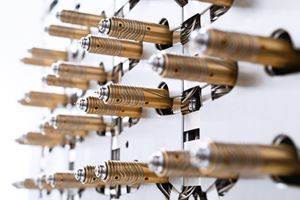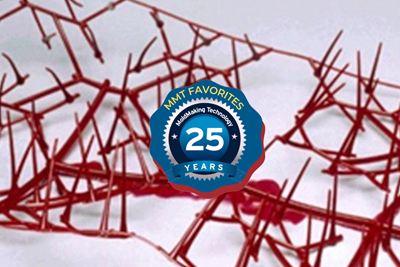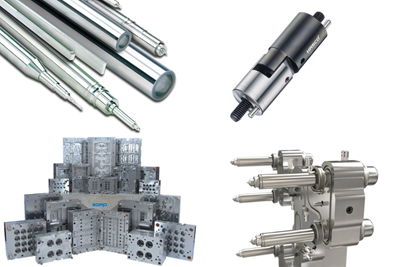
Bioresin applications require thermally optimized hot runner and mold plate cooling. Photo Credit, all images: Husky Technologies
The manufacturing world’s growing emphasis on sustainability and a reduced carbon footprint, driven increasingly by eco-conscious consumers, has helped maintain a strong interest in bioresins. These renewably sourced materials are derived from a wide range of biological carbon sources. As a result, demand is growing worldwide and represents a significant market opportunity for the injection molding industry.
Along with the attractive business opportunities that bioresins present comes unique challenges and limitations with material physical properties, manufacturability, performance and quality. The bottom line is that conversion into useful end-use products requires a keen understanding of these materials through experience, processing and simulation tools.
Users and developers of hot runner systems face challenges and must develop mitigation strategies to maintain productivity and achieve the best manufacturing results.
Biopolymers should not be treated like standard resins. Instead, processing techniques and equipment should be optimized to achieve the best results.
Growing Biomaterial Interest
New legislation and regulations pressure manufacturers worldwide to reduce post-consumer waste and plastic pollution. Commercial developments in bioresins have grown the most in the European Union, where regulations are prompting brand owners and manufacturers to develop bio-based products at an increasing rate.
The strongest regulatory push has come in Europe, the Middle East and Asia. However, there is growing legislative action in the U.S., where greater awareness of waste and recycling issues has resulted in consumer-led environmental action and a focus among manufacturers to reduce their carbon footprint and meet the demands of a circular economy.
The global production capacity of bioplastics continues to grow. Polylactic acid (PLA) is expected to be the largest segment in terms of volume due to its availability, cost and commercial use in a range of applications. Chemically, it is a polyester-like polyethylene terephthalate (PET) and polybutylene terephthalate (PBT) (see sidebar). It shares some of their processing characteristics regarding operating pressures, temperature sensitivity and drying requirements. Its mechanical properties are similar to polystyrene (PS). Today, PLA is the only biodegradable polymer capable of addressing the demands of the mass bioplastics production market.
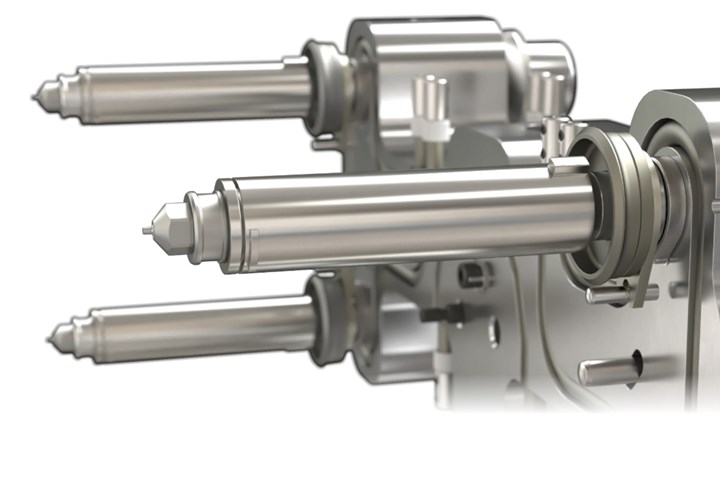
Hot runner systems should be designed to preserve melt chemistry and meet the challenges of processing thermally sensitive resins.
Managing Bioresins
For those using and developing hot runner systems, biopolymers, like PLA, pose many challenges and limitations that must be addressed. These materials are highly viscous and require high-fill pressures. Rheological data is rare for these materials, so there is reliance on substitute characteristics or the generation of new data. Testing can be necessary, so hot runner suppliers with full resin testing capabilities offer significant advantages to molders and part designers.
Global engineering and process experience are vital in designing hot runner systems for bioplastics applications. In addition, the sensitive nature of bioresins requires an in-depth application review to mitigate any potential risk:
- Thermal finite element analysis (FEA) monitors heat distribution along the flow path and minimizes overshoot. Thermal FEA tools predict manifold temperature variation per the design by adjusting heater wrap, heater zones, thermocouple placement, melt channel layout, heat sinks and the manifold profile.
- Melt channel selection via proprietary software provides an evaluation of melt channels to maintain an adequate shear rate. As a result, equal melt distribution can be achieved with a geometrically balanced layout.
- Low-temperature gate design ensures components meet the required fit and seal during thermal expansion.
Other critical requirements in hot runner design include corrosion-resistant materials and a valve gate to reduce gate shear, yield the best gate quality and provide a wider processing window.
Bioresin applications also require thermally optimized hot runner and mold plate cooling. One way to ensure thermal uniformity throughout the hot runner system is by routing water lines on both sides of the drops. This ensures controlled plate bowing, uniform thermal expansion, drop-to-drop consistency, nozzle-to-plate interface, drop balance and consistent part quality.
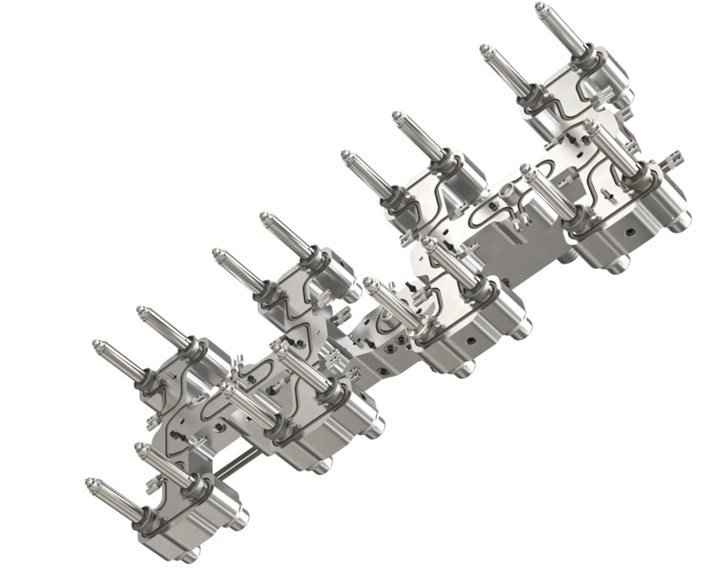
The right hot runner technology can mitigate the risks and limitations of PLA to produce parts for a high-output operation.
For example, a hot runner system with nonreactive surfaces that touch the molten resin. These materials extend component longevity against the corrosive effects of the bioresins and provide excellent control over the thermal profile. A system like this ensures the lowest risk for melt degradation, oxidization and discoloration.
A unique feature of the right temperature controller is remote standby, which provides a closed-loop interlock between the controller and injection molding machine, preventing resin degradation.
Controlling Accuracy, Consistency
Every hot runner system requires a temperature controller to manage temperature and mechanical settings. In bioresin applications, it is recommended to use controllers that provide highly accurate temperature, servo and valve gate control, which feature easy-to-use navigation on large full-color touch monitors, are available in various configurations and can be implemented in any injection molding environment.
An accurate and repeatable controller eliminates process variation and provides optimized control for greater shot-to-shot and cavity-to-cavity consistency and reliability. Look for a controller that uses Active Reasoning Technology, which delivers tighter temperature control and minimized variation through optimal power output delivery, fully isolated thermocouple inputs and thermocouple sample rates to ensure the integrity of temperature readings and signals.
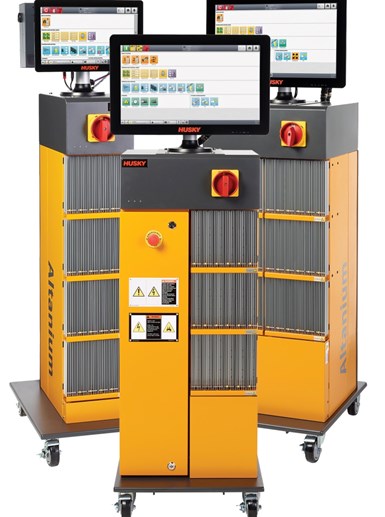
Hot runner systems demand a temperature controller to manage temperature and mechanical settings. In bioresin applications, controllers provide highly accurate temperature, servo and valve gate control.
A unique feature of this temperature controller is remote standby, which provides a closed-loop interlock between the controller and injection molding machine, preventing resin degradation. This is an important processing tool to help manage the temperature limitations of bioresins. As the machine runs, the controller senses a cycle interruption and goes into standby, reducing melt temperature to prevent degradation.
The processing characteristics and performance of bioresins differ significantly from standard plastic materials, posing unique challenges and risks. Therefore, these biopolymers should not be treated like standard resins. Instead, processing techniques and equipment should be optimized to achieve the best results. Work with a hot runner supplier that employs various strategies to prevent PLA from degrading and becoming brittle while offering experience and knowledge to develop guidelines and procedures to mitigate and solve these challenges.
Related Content
Fundamentals of Designing the Optimal Cooling System
The right mold components can help improve mold cooling and thereby produce higher-quality parts.
Read MoreMaintaining a Wire EDM Machine
To achieve the ultimate capability and level of productivity from your wire EDM on a consistent, repeatable and reliable basis, regular maintenance is a required task.
Read More6 Ways to Optimize High-Feed Milling
High-feed milling can significantly outweigh potential reliability challenges. Consider these six strategies in order to make high-feed milling successful for your business.
Read MoreTreatment and Disposal of Used Metalworking Fluids
With greater emphasis on fluid longevity and fluid recycling, it is important to remember that water-based metalworking fluids are “consumable” and have a finite life.
Read MoreRead Next
How to Use Hot Runner Balance in Mold Qualification
If you are interested in the impact of system and hot runner balance on part quality, the causes of unbalanced hot runner systems and short shot parts, the procedure for measuring system balance and the impact of application specifics on system and hot runner balance expectations, then tune into this on-demand webinar.
Read MoreRevisiting Some Hot Runner Fundamentals
What exactly does a hot runner do? If you’ve been in the injection molding industry for any length of time, you might think the answer is obvious, but it is not.
Read MoreEnhance Your Moldmaking Capabilities With These Hot Runner and Mold Component Products
MMT highlights new and improved innovations, including data collection devices, pins, bases, controllers, bushings, nozzles, positioning systems and much more.
Read More_970x90 3.png;maxWidth=970;quality=90)










.png;maxWidth=300;quality=90)




_300x250 4.png;maxWidth=300;quality=90)




.jpg;maxWidth=300;quality=90)






